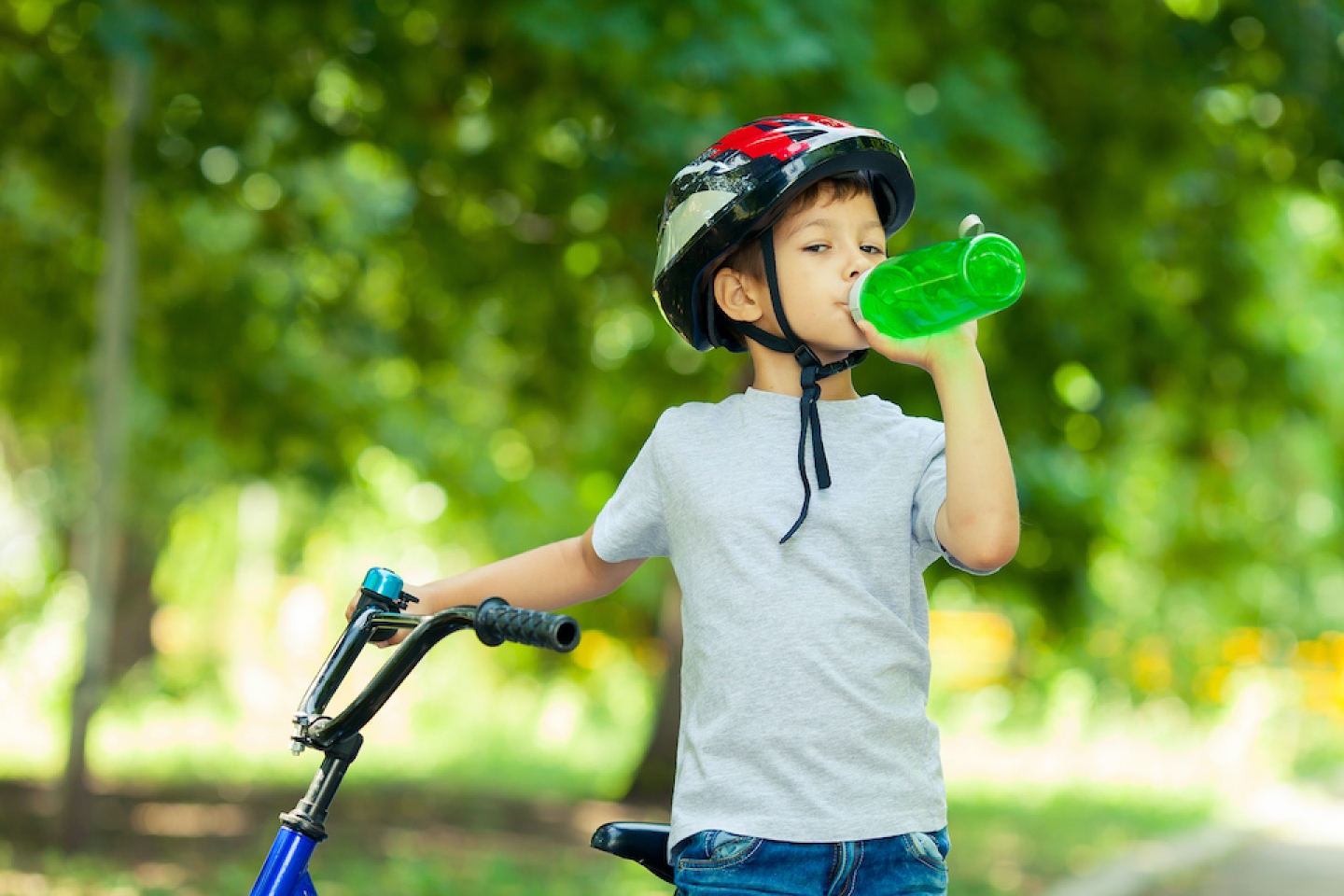
The heat wave is gone but the next one is around the corner--and so is the risk for heat-related illnesses. Being young and fit might seem to protect against such illnesses, however, children and young athletes who play sports that require wearing heavy equipment, or who simply may not know when to take a break are actually more vulnerable than adults in extreme heat conditions, says Amy Skaria, MD, assistant professor of clinical pediatrics in primary care and rehabilitation medicine. “Kids have a lower sweating capacity compared to adults, so they sweat less overall, which means their bodies do not dissipate heat as efficiently as adults,” Dr. Skaria says.
Plus, children and teens commonly play or exercise during hot and humid weather without resting or drinking enough fluids. “When exposed to warmer environments, our bodies acclimate to the heat over time by making physiologic changes,” Dr. Skaria explains. “This process of heat acclimatization is critically important in increasing our heat tolerance and lowering our risk of heat-related illness. Compared to adults, children take roughly twice as long to acclimatize to heat, making them more vulnerable to heat-related illness,” she adds. Children’s risk for heat-related illnesses increases further if they are overweight, have chronic health problems, or take certain medicines.
Heat cramps are the mildest form of heat illness. They are painful muscle cramps or spasms that occur when the body loses too much salt and water, and usually affect the abdomen, arms, or calves, during or after intense exercise and sweating in high heat. If your child experiences heat cramps, she should:
Heat exhaustion also results when the body loses too much water and salt. It is more severe than heat cramps because it means the body cannot cool itself. Untreated heat exhaustion can lead to heat stroke. Symptoms of heat exhaustion include:
In the event of a heat-related illness:
Heat stroke, the most severe form of heat illness, is a life-threatening emergency that occurs when excessive heat overwhelms the body. It can lead to seizures, coma, or death. “If your child’s skin is hot, dry, and flushed, and if she is confused, dizzy, or not acting like herself, then she may be suffering from heat stroke,” Dr. Skaria says. “If you suspect heat stroke, immediately place your child in a cold bath and seek emergency medical care by calling 911.”
One of the best ways to prevent heat-related illness is to adjust to the heat slowly by gradually increasing the duration and intensity of outdoor activity. This is especially important for children and teens who may be out of shape or overweight (BMI over 25).
Although outdoor exercise and play are important for children’s mental and physical health, it is best to stay indoors when the heat index exceeds 90 degrees, Dr. Skaria advises. “In the warmer months, spending time outdoors during the early mornings or evenings can help prevent heat-related illness,” she says.
Finally, she urges caregivers and coaches to: